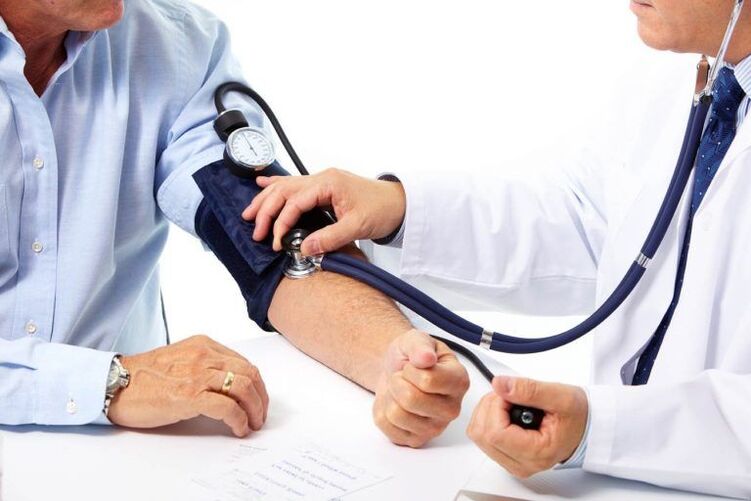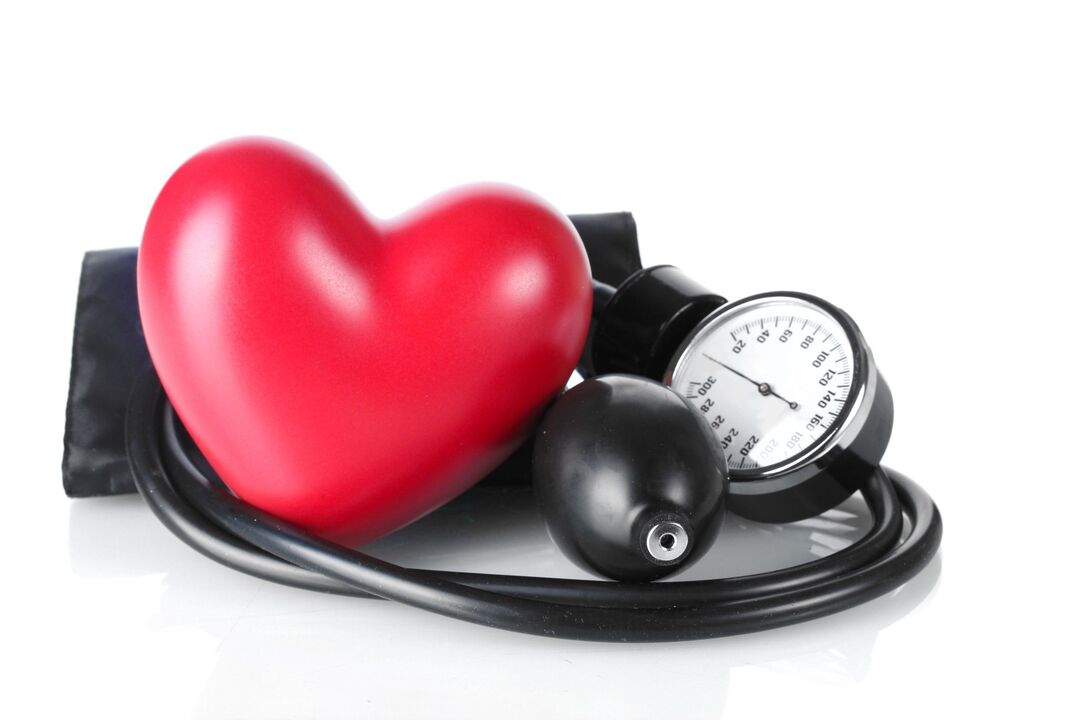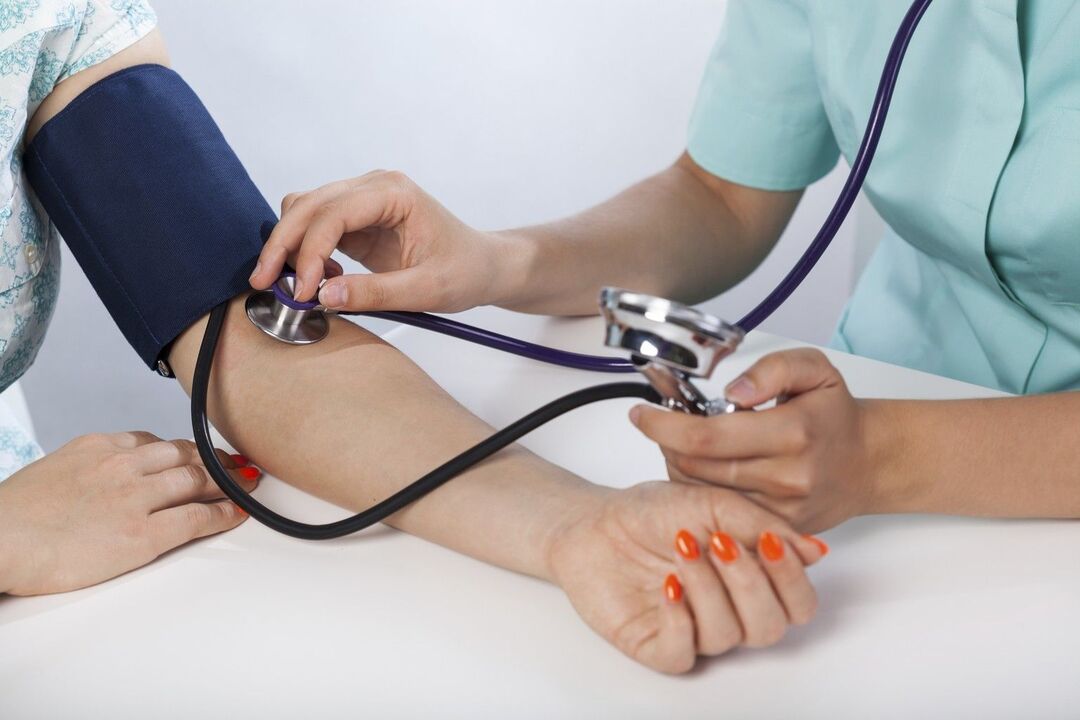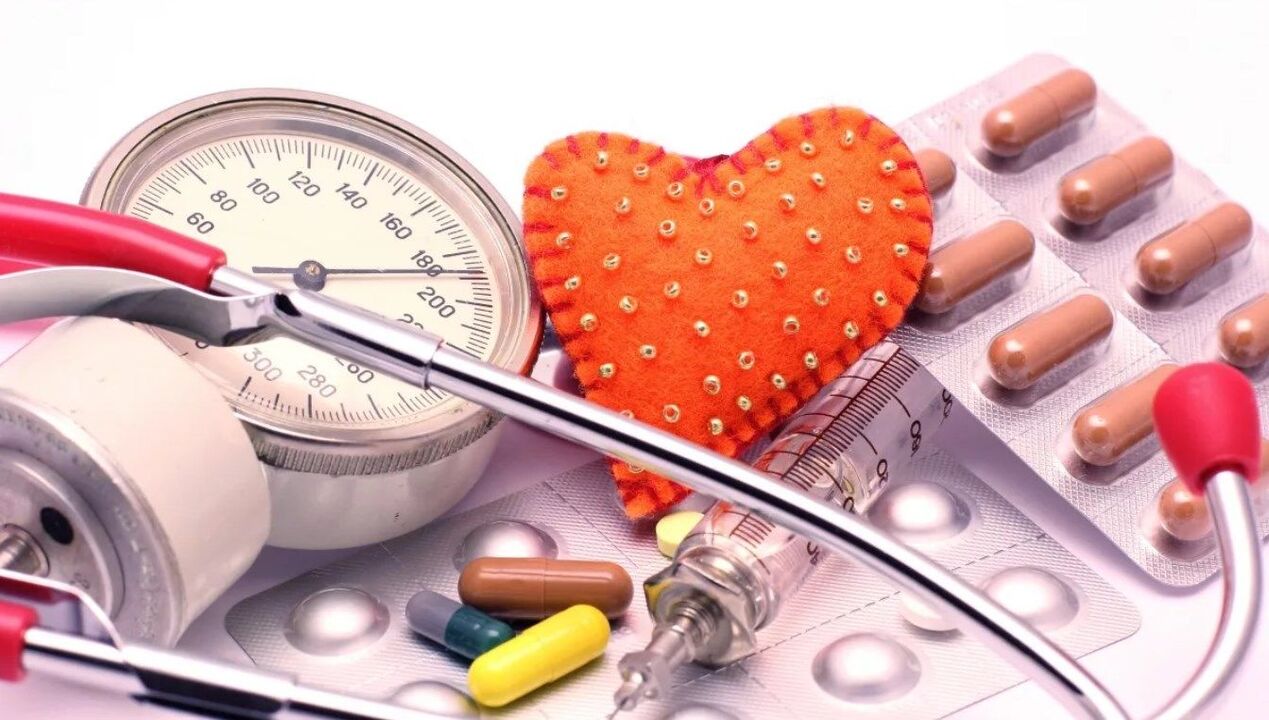
Hypertonic disease is the most common disease of the circulatory system worldwide. About 30% of the world's population suffers from this disease. In recent years, a significant "renovation" of the disease has been observed - among the patients, more and more middle -aged, middle -aged people.
Hypertension is fraught with severe complications, with disabilities, often leads to death. At the same time, undergoing a number of rules, the occurrence and development of the disease can be delayed for years. Each person must be familiar with the risk factors for the development of hypertension, his symptoms and principles of treatment.

What is hypertension
Hypertonic disease or arterial hypertension (synonym: essential hypertension, primary hypertension) - chronic proceeding, prone to progress, in the clinical appearance of which the main symptom is a constant, prolonged increase in blood pressure (d.
Arterial hypertension criteria are considered to be systolic blood pressure (blood pressure) from above or equal to 140 mm Hg. Art. and/or diastolic blood pressure exceeding 90 mm Hg. Art.
The etiology of the disease
Hypertonic disease is considered an idiopathic disease, the immediate causes of its occurrence are not established.
Among the many theories of the emergence and development of primary hypertension, classical neurogenic theory is more widespread. This concept considers hypertension as a neurotic condition of the highest nervous activity. The initial mechanism is considered nervous overvoltage (acute or prolonged, chronic), which causes a violation of trophism of the brain structures that are responsible for regulating blood pressure. Of particular importance are emotions that have not received implementation in the motor sphere, the so -called "unresponsive emotions".
In the emergence of primary hypertension, a genetic predisposition is traced. In 35-50% of people suffering from hypertension, the family nature of the disease is observed. A specific gene, whose defect would lead to a constant increase in blood pressure, has not been detected. Perhaps, the disease has a type of polygonic heritage.
The pathogenesis of hypertension
The pathogenesis of primary hypertension is complicated and at different stages has its own characteristics. According to neurogenic theory, under the influence of nerve overlap, the inhibitory effect of the cortex of large brain hemispheres in the subcortical (hypothalamic) vegetative centers is reduced, which causes the oppressor's sympathetic system (vasoconstrictor). There is an adrenaline emission, increased heart spill, arteries are narrowed (including renal), blood pressure increases. The spasm of the renal arteries activates another powerful pressure-rrene-angiotensin-aldosterone system, which gives its important contribution to increased blood pressure. Other vasoconstructive agents are also associated with the passage of time - antidiuretic hormone, prostaticilla, endothelium, thromboxan. They are opposed by prostaglandins of depression-vascular systems, callicrein-kin, and a sodium reutrium system. A long spasm of the arteries leads to a violation of the function of their internal shell (endothelium), restructuring the blood vessel walls and contributing to the development of atherosclerosis.
Risk factors
Risk factors are attributed to signs, the presence of which in humans increases the chance of developing the disease. The variety of risk factors for primary hypertension is divided into two groups - modified and non -modified.
Non -modified risk factors (it is impossible to influence them))
These include:
Modified risk factors (subject to impact)
These include:
Classification of arterial hypertension
Primary hypertension is classified according to the level of arterial hypertension, by the nature of the lesion of the target organs.
Classification of arterial hypertension levels (AG)
Category of systolic blood pressure, mm Hg. Art. Diastolic blood pressure, mm Hg. Art.
Classification by the nature of loss of target organs
Mishnian organs are called those organs in which pathological changes arise mainly due to hypertension. For primary hypertension, the objectives are the heart, the kidneys, the brain, the eye network shell, the blood vessels.
3 stages of primary hypertension
It is customary to distinguish the 3 stages of primary hypertension:
Stage of-characterized by the lack of changes from the target organs;
Stage II-There are changes in target organs that are not manifested by any symptoms:
Stage III-There are symptoms of changes from target organs:

Symptoms of hypertension
In some cases, for a long time the only symptom of essential hypertension remains an increase in blood pressure. It may be associated with non -specific complaints of headaches (occurs in the morning, from the type of "severe head", with localization in the occipital region), irritability, excessive fatigue, sleep disturbances, general weakness, dizziness and rapid palpitations.
Hypertonic crises are considered a bright sign of shortening the disease (from 1-2 hours to 2-3 days) of irritation of the disease, manifested by a sudden increase in blood pressure. They occur in about one -third of patients.
There are 2 types of crises for hypertension: first order (adrenal) and second order (norepinephrine).
The first -order hypertensional crisis develops more often in people with middle middle. Increased blood pressure occurs at night, accompanied by a headache, chills, extremities, anxiety, anxiety, a rapid heartbeat.
A second -order hypertensive crisis is characteristic of the elderly. Increased blood pressure is associated with a pronounced headache, damaged visual perception, braking, drowsiness, nausea, vomiting.
With prolonged experience of hypertension in the clinical figure, the main place is occupied by symptoms of target organ diseases: lecket pain with pectoris angina, shortness of breath, swelling with heart failure, symptoms of a stroke, etc.
Diagnosis of hypertension
To establish a diagnosis of hypertension against a person, it is necessary to identify a continuous increase in blood pressure and exclude the presence of other diseases characterized by arterial hypertension syndrome.
An increase in blood pressure is determined using a conventional tonometer - hell is measured by a physician or patient himself. One necessary condition is to match the methodology of measuring blood pressure-the treatment is performed after 3-5 minutes of rest in a comfortable environment, sitting, at rest, shoulders and heart should be placed on the same level. Blood pressure level above or equal 140/90 mm Hg. Art. He talks about the suspicion of essential hypertension. In complex diagnostic cases, daily blood pressure monitoring methodology is used.
Diseases that accompany high blood pressure
In addition to hypertension, there are still a number of diseases accompanied by an increase in blood pressure: renal pathology (pyelo-/glomerulonephritis), vasorenal hypertension (caused by narrowing of renal arteries), Connal-Pheochromocytoma, Conortic Coarctation (Connal Disorders) syndrome syndromeof the disease, the disease.
An additional examination is aimed at detecting the pathologies of the target organs. This allows you to clarify the stage of hypertension, describe the appropriate treatment.
Diagnostic measures include:

Hypertension Treatment
In the treatment of primary hypertension, non -drug methods and medicines that complement one -other are used successfully.
Non -DRUG methods of arterial hypertension treatment
They have been prescribed absolutely all patients with hypertension, even if a person takes medication to control blood pressure. These measures mean the elimination of risk factors by modifying the determined lifestyle and human habits. Scientists have proven that non -Drug treatment in certain cases is not inferior to medication treatment.
Key Guidelines:

Treatment of arterial hypertension drugs
Implies the use of medicines.
For effective treatment of primary hypertension, some drug classes are recommended by experts, they reduce blood pressure, affecting different stages of the pathogenesis of the disease.
Main drug classes:
Combinations of medicines for the treatment of arterial hypertension
In the treatment of hypertension, the combinations of medicines from different groups are widely used, for example, IACD + diuretic, calcium + iacf, -block + sartan + diuretic. The modern pharmaceutical industry produces a large number of alert -made medicines that simplify many medicines.
It should be noted that the treatment of hypertension is performed under the constant control of a doctor-therapist or a cardiologist. The doctor determines the volume of medical measures, the moment of prescribing medication, dosage, etc.
The independent recipe of antihypertensive drugs is unacceptable. With the development of malignant hypertension, which is not suitable for the effects of the medication, surgical treatment of hypertension (stimulation of carotid sinus baroreceptors, kidney denunciation, etc. ) can be performed.
Preventing hypertension
Primary prevention of hypertension should be done from childhood. Children, adolescents, young people should regularly suffer medical examinations by measuring blood pressure. Prevention should affect the risk factors of the disease. Children show a rational load of muscle, overload, excessive consumption of salt food is unacceptable. Secondary prevention is aimed at preventing the progression of the disease. People suffering from hypertension are contraindicated at night, overtime, and conjugated with nerve overload.

















